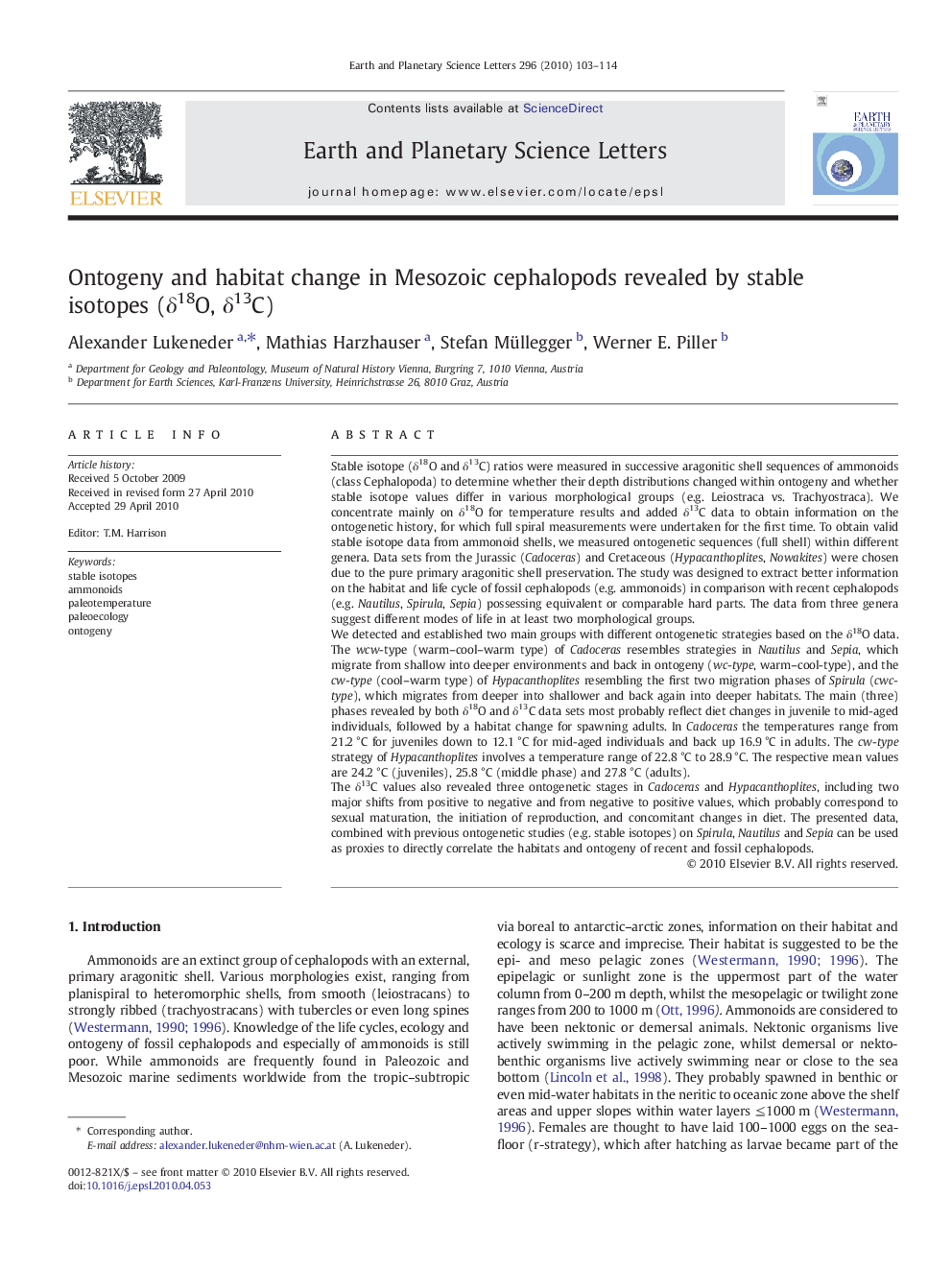| کد مقاله | کد نشریه | سال انتشار | مقاله انگلیسی | نسخه تمام متن |
|---|---|---|---|---|
| 4678565 | 1634848 | 2010 | 12 صفحه PDF | دانلود رایگان |

Stable isotope (δ18O and δ13C) ratios were measured in successive aragonitic shell sequences of ammonoids (class Cephalopoda) to determine whether their depth distributions changed within ontogeny and whether stable isotope values differ in various morphological groups (e.g. Leiostraca vs. Trachyostraca). We concentrate mainly on δ18O for temperature results and added δ13C data to obtain information on the ontogenetic history, for which full spiral measurements were undertaken for the first time. To obtain valid stable isotope data from ammonoid shells, we measured ontogenetic sequences (full shell) within different genera. Data sets from the Jurassic (Cadoceras) and Cretaceous (Hypacanthoplites, Nowakites) were chosen due to the pure primary aragonitic shell preservation. The study was designed to extract better information on the habitat and life cycle of fossil cephalopods (e.g. ammonoids) in comparison with recent cephalopods (e.g. Nautilus, Spirula, Sepia) possessing equivalent or comparable hard parts. The data from three genera suggest different modes of life in at least two morphological groups.We detected and established two main groups with different ontogenetic strategies based on the δ18O data. The wcw-type (warm–cool–warm type) of Cadoceras resembles strategies in Nautilus and Sepia, which migrate from shallow into deeper environments and back in ontogeny (wc-type, warm–cool-type), and the cw-type (cool–warm type) of Hypacanthoplites resembling the first two migration phases of Spirula (cwc-type), which migrates from deeper into shallower and back again into deeper habitats. The main (three) phases revealed by both δ18O and δ13C data sets most probably reflect diet changes in juvenile to mid-aged individuals, followed by a habitat change for spawning adults. In Cadoceras the temperatures range from 21.2 °C for juveniles down to 12.1 °C for mid-aged individuals and back up 16.9 °C in adults. The cw-type strategy of Hypacanthoplites involves a temperature range of 22.8 °C to 28.9 °C. The respective mean values are 24.2 °C (juveniles), 25.8 °C (middle phase) and 27.8 °C (adults).The δ13C values also revealed three ontogenetic stages in Cadoceras and Hypacanthoplites, including two major shifts from positive to negative and from negative to positive values, which probably correspond to sexual maturation, the initiation of reproduction, and concomitant changes in diet. The presented data, combined with previous ontogenetic studies (e.g. stable isotopes) on Spirula, Nautilus and Sepia can be used as proxies to directly correlate the habitats and ontogeny of recent and fossil cephalopods.
Journal: Earth and Planetary Science Letters - Volume 296, Issues 1–2, 15 July 2010, Pages 103–114